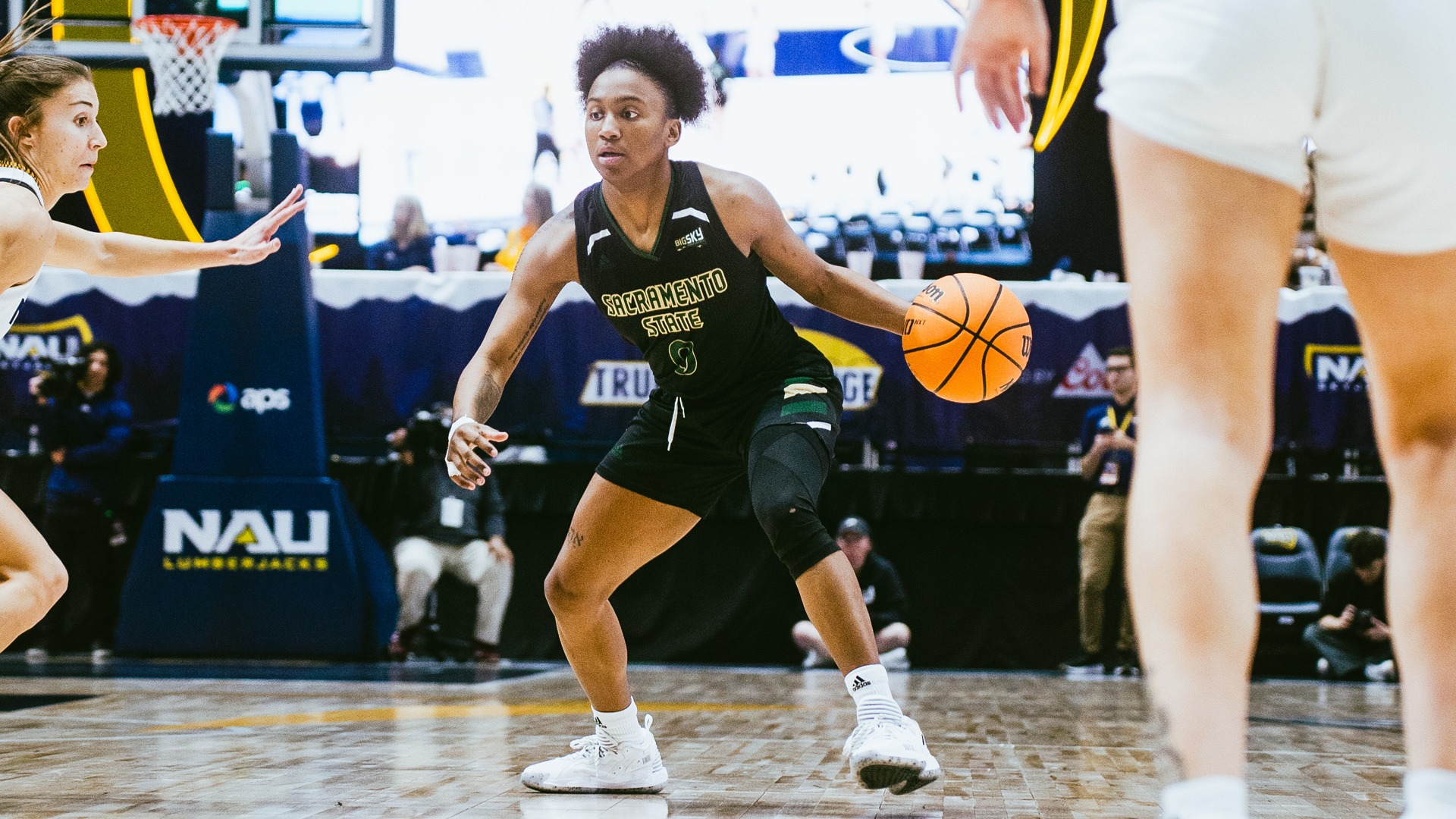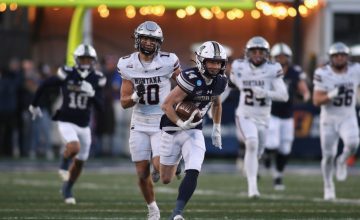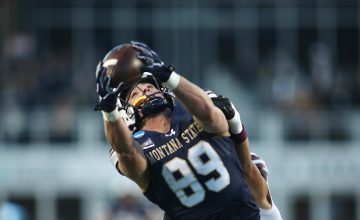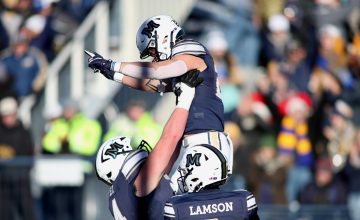Every Big Sky team has played everybody else at least once, so that means it’s time to pick mid-season awards and all-conference teams! Why are we doing this? Well, because we like to give you sweet content, for one, and also it’s a handy way to check back in on every team at the halfway point, and gather scattered thoughts about the league from the first half in one place. A couple notes before we begin:
– A lot of thought went into this, but it’s for fun, meant to spark discussion rather than provoke argument. It’s also just my opinion. Reasonable people can disagree. Several of the choices are agonizingly close. I’ve tried to make clear below which ones those are. Eventually, you have to put somebody on the first team and somebody on the second, or off altogether. That doesn’t mean I think those players are bad. Please don’t take this too seriously.
– I’m using the preseason ballot format for all-conference – that is, one league MVP, who also goes on the all-conference first team along with five other players. Then five on the second team, giving us 11 all-conference players altogether. I’m also not using strict positional requirements for the teams – if you could throw them on the floor together and it doesn’t look ridiculous, that’s good enough for me. I’ll also give my top three for MVP, Freshman of the Year and Newcomer of the Year. I’m not doing Defensive Player of the Year because, frankly, I don’t think I’m qualified to make that pick without watching a lot more Big Sky basketball than the already appalling amount I’m currently watching.
– It’s not difficult to pick up on my innate biases if you read the piece, but I’ll list a couple here, including my primary one: in basketball, team success matters a lot when picking all-conference, because it shows that a player can have an impact on winning, which after all is the point. Obviously there are plenty of other considerations – the rest of the roster, the coach, etc. – but generally speaking it’s difficult for me to consider a player on a bad team one of the five best players in the conference. At the same time, I’d need a good reason to say that the best team in the conference doesn’t have a player worthy of first-team consideration. I also like players who contribute in multiple areas of the game, not just scoring.
MVP
1. Kahlaijah Dean, Sacramento State
2. Darian White, Montana State
3. Beyonce Bea, Idaho
These are the only three real candidates – and, really, the only two since Idaho’s six-game losing streak took a little shine off Bea’s averages of 21.2 points and 8.4 rebounds per game, both top-three in the conference. If the Vandals put a run together – they swept Idaho State and Weber State last weekend – Bea’s polished all-around offensive game will have her right back in the conversation.
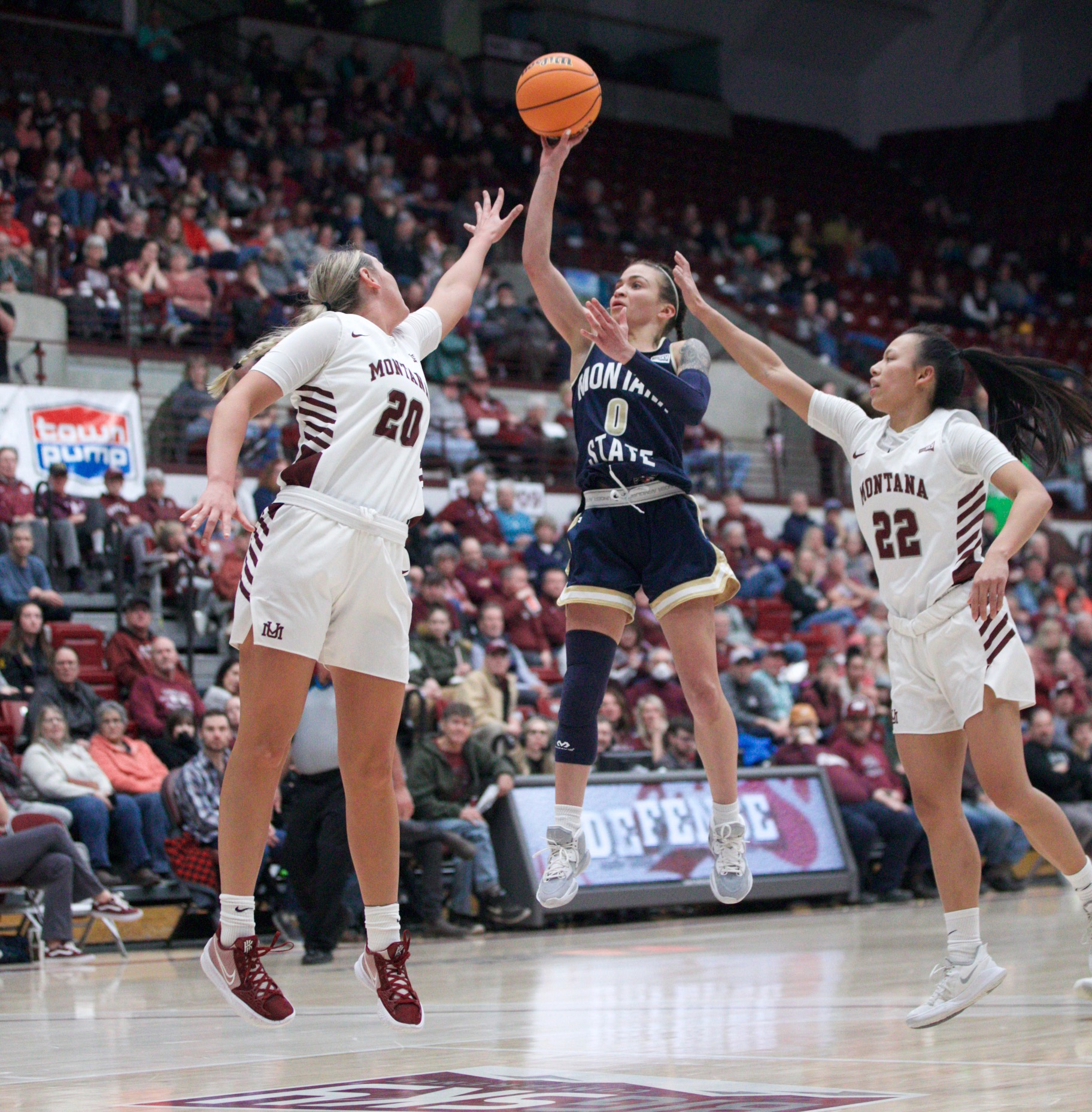
White has been the best player in the league essentially since she stepped on the court as a freshman in 2019 – a devastating two-way whirling dervish whose athleticism allows her to run an offense and disrupt the other team’s at the same time. Ironically, she still hasn’t won the postseason MVP despite winning almost everything else (Freshman of the Year in 2019-20, Defensive Player of the Year in 2020-21 and Tournament MVP last year). Now in her fourth year, she’s reached her apex as the steady hand at the controls of the deepest Montana State team she’s had around her.
White’s averaging career lows in points (11.7) and steals (1.2) per game, and is shooting career-low percentages from the field and both the free-throw and 3-point lines – but any slight slippage in the stats is barely visible to the eye, it’s clear she’s still the straw that stirs the drink for the best team in the league, and there’s something to be said for just being the straight-up best player.
Dean, on the other hand, doesn’t require subtlety or nuance to appreciate – 21.9 points per game on 48/40/83 shooting splits, playing 35 minutes a game for a Sac State team that led the league until falling apart down the stretch of back-to-back losses in Montana last weekend. She’s scored at least 24 points in seven out of nine conference games, including 31 twice – on a combined 30 shots – against Eastern Washington and Weber.
I think Dean *will* win MVP easily – the coaches gave the award to Sac State’s Lianna Tillman over White last season when Tillman averaged 20.4 points on much worse shooting percentages – but it’s worth appreciating her game for more than the stats. I kid you not, she reminds me of Idaho quarterback Gevani McCoy – woefully undersized but lithe and loose, arms swinging back and forth, completely unbothered being the center of attention, revving into action with an assassin’s mix of crossovers into hanging scoop finishes, dead-eye midrange pull-ups and dagger step-back 3s. The best scorer this conference has seen since Savannah Smith.

ALL-CONFERENCE
Kahlaijah Dean, Sac State
Darian White, Montana State
Beyonce Bea, Idaho
Isnelle Natabou, Sac State
Jaydia Martin, Eastern Washington
Regan Schenck, Northern Arizona
Dean, White and Bea – covered above – are locks. So’s the 6-foot-5 Natabou, whose wooden post-up game obscures her statistical impact – 15 points, 10.3 rebounds per game – and the way she warps everybody else’s defensive strategy by requiring a double-team at all times.
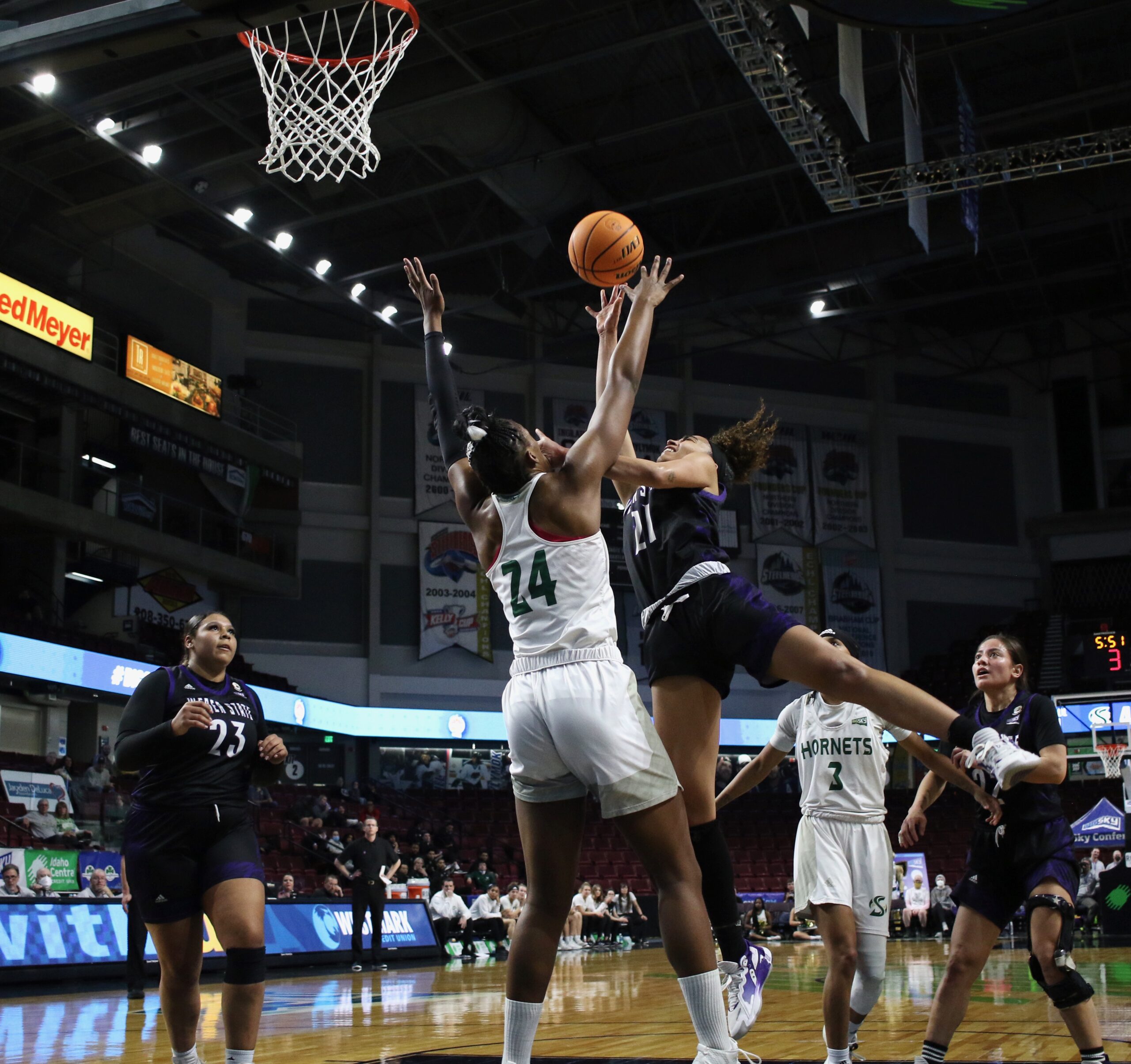
There are plenty of candidates for the last two spots. If Montana keeps rolling, the Lady Griz will have someone on the list by the end of the year – probably versatile stretch 4 Carmen Gfeller, although her scoring and rebounding averages are down a touch from the last two years.
Portland State’s Esmeralda Morales and Northern Colorado’s Hannah Simental are carrying heavy scoring loads for their teams as two examples of the same fun-to-watch archetype – small lead guards with deadly outside shots and plenty of tricks to get them off against taller defenders. Both are shooting over 40% from 3.
Montana Oltrogge has had a huge impact as an in-league transfer for Northern Arizona, averaging 14.6 points and 8.3 rebounds. For Oltrogge’s old team, Idaho State, Callie Bourne moved back to point guard and has been the rock-solid avatar for the Bengals’ grinding, physical style, averaging 13.4 points, 7.2 rebounds and 4.5 assists – all top 10 in the league.
But Martin has taken a huge step forward as the leader of Eastern Washington’s shocking revival – the Eagles are 6-4 in league after going 7-13 a year ago. Martin, who averaged 15.2 points a year ago, is only up to 16.1 but on way better percentages – 42.2% from the field, 82.2% from the line and a respectable 37.9% from deep on some of the highest volume in the league.
Schenck is one of the most unique players in the league – a high-usage point guard like Dean but one who’s looking to set up instead of score. Her 7.3 assists per game are the most in the league by far, and she’s up over 40% from 3 as well, averaging 12.3 points per game for a Northern Arizona team that’s beaten Montana State, Sac State, Montana and Idaho.
Second team: Gfeller, Morales, Oltrogge, Bourne, Daryn Hickok (Weber State)
FRESHMAN OF THE YEAR
1. Sophie Glancey, Northern Arizona
2. Libby Stump, Montana
3. Rosa Smith, Idaho
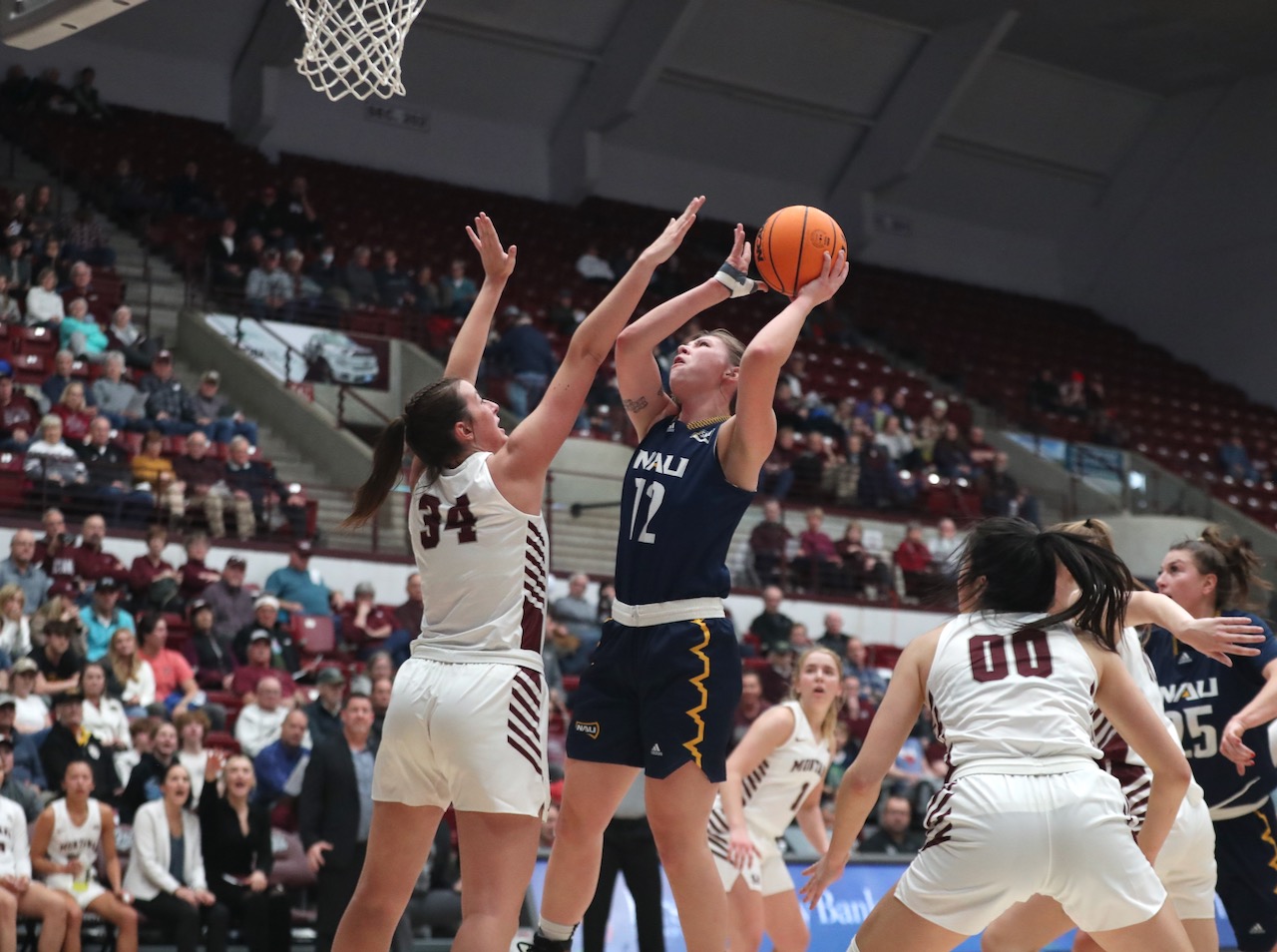
Unlike the men’s race for freshman of the year, this one is loaded, with multiple candidates not listed in the top three who are making a bigger impact than any freshman in the men’s league.
Montana’s Mack Konig is the looming existential threat to this race – a top-100 national recruit who’s seemed to unlock every part of her considerable talent all at once in the last few weeks like Scarlett Johansson in Lucy. If she keeps playing at the ceiling she’s demonstrated in the last two weeks – back-to-back 20-point games against Montana State and Sac State, then 10 more and six assists in an easy win against Portland State – she could make the award a formality down the stretch.
For now, an uneven start pushes her below several other deserving candidates, including her teammate Stump. Blessed with an Old West gunman’s trigger finger and the first step to get to her pull-up jumper every time, Stump went for 15 points in her second-ever college game at Colorado State, had a run of five straight games with at least 14 points spanning the end of non-conference play and the opening of Big Sky play, and exploded for a career-high 21 in her first rivalry game against Montana State.
She’s narrowly below a freshman with an even more surprisingly polished offensive game. Glancey tortured the Lady Griz on the low block with a career-high 22 points in Missoula early this year, part of a run of 13 double-figure scoring nights in the first 21 games of her career. With Schenck feeding her, those numbers should stay up, and she’s also grabbing 4.5 rebounds a game.
Smith and Eastern Washington’s Aaliyah Alexander are near-clones of each other on the Palouse, both averaging around 10 points per game on shooting percentages hovering near 40%. Alexander is scoring a little more but Smith brings more to the table in other parts of the game, leading the Vandals in assists.
Northern Colorado has a trio of rookies making big impacts for a very young (and struggling) team, including Averee Kleinhans (9.2 points, 4.9 rebounds, team-high 3.4 assists), Gabi Fields (8.8 points) and Aniah Hall (5.8 points, 3.7 rebounds).
In Pocatello, Kacey Spink has been a long-armed, energetic tempo-setter with 6.2 points and 6.2 rebounds per game, plus the fifth-most steals in the league.
Madison Butcher and Benthe Versteeg have broken into Sac State’s rotation, while Marah Dykstra, Mattie Olson and Dylan Philipp have done the same for Montana State – big responsibilities for the two best teams in the league and bright signs for their future.
NEWCOMER OF THE YEAR
1. Kahlaijah Dean, Sacramento State
2. Jamie Loera, Eastern Washington
3. Delaynie Byrne, Northern Colorado
Oltrogge and Montana’s ex-Idaho point guard Gina Marxen are ineligible for the award, at least for the purposes of this column, which makes Dean even more of a runaway winner.

Loera, a grad transfer from Arizona State, is a low-key all-conference contender, one of the best pure point guards in the league for Eastern Washington. She’s at 10.3 points per game – and should probably shoot less, given her 37% and 29% splits from the field and from 3, respectively – but is second in the conference with 4.8 assists and first with 2.4 steals.
Byrne is scoring 13 points and grabbing 7.3 rebounds for Northern Colorado and, after a slump to start conference play, has scored in double figures in five straight.

